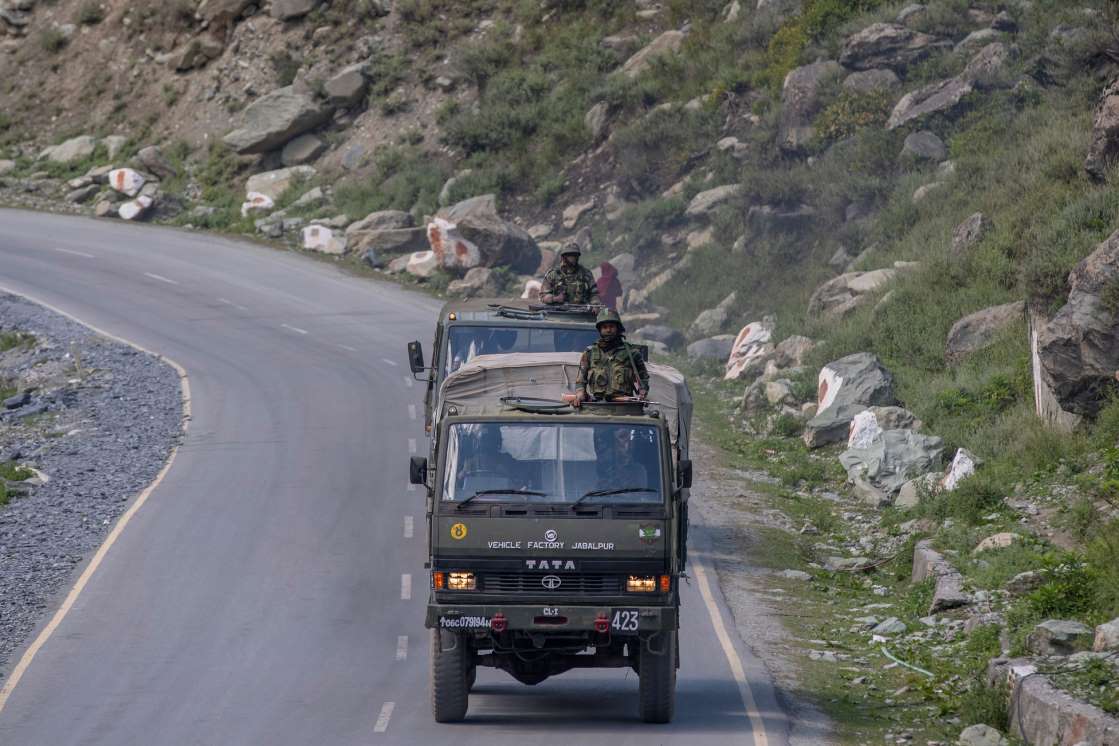
SOURCE: ENS
On the night of August 29-30, almost four months after the PLA made significant ingress into Indian territory in eastern Ladakh, India, for the first time, outplayed China with its manoeuvres. By the crack of dawn, Indian forces had taken dominant positions on some key heights along the Line of Actual Control (LAC), snaking through the south bank of Pangong Tso to Rechin La near Rezang La.
This move threatened key Chinese positions on its side of the LAC, and provided India a bulwark against lost ground on the north bank of the lake. The Indian Army said the move was “pre-emptive” since it noticed PLA troops moving towards previously unmanned locations.
Yet this operation to reach the unoccupied heights took almost a month of careful planning — from the drawing board to implementation on the field. Plans for such a move, a source in the security establishment said, had the political go-ahead from Delhi because there was realisation there that Beijing was not serious about completing disengagement of troops.
After the success of Corps Commander-level talks on June 30 that led to withdrawal of troops at Patrol Point 14 in the Galwan Valley, hopes of full disengagement were high. But by July 14, the fourth round of talks, it was clear that China was not pulling back its troops fully from Gogra Post and Hot Spring areas, and the ridges of the Fingers area on the north bank of Pangong Tso.
When the August 2 meeting ended with China not even ready to accept it had violated Indian territory on Pangong Tso’s north bank, the Indian establishment realised that military action to wrest some tactical advantage was the only option.
A top source in the Army said “plans are always ready for all steps, and are shared with very few people”. “Planning does not start when talks fail,” and “forces prepare multiple plans”, keeping in mind that the outcome of talks can never be predicted. “When to get them into play is the question,” the source said.
The final plan, the source said, had been ready for over a fortnight before the action. “Two weeks before it happened, the seriousness about putting weight on this particular action started gaining. Then the ground commanders came here to give presentations.”
“The top brass and field officers sat with the drawing board. Chinese vulnerabilities were worked out vis-à-vis our own strength. Locations of tactical advantage were discussed. Strategies to achieve them were worked upon. Each and every move, to the last detail, was mapped. And just before the operations, reconnaissance was carried out. It took close to a month to do all this, in complete secrecy. With some luck on our side, it was achieved without too much fuss,” the source said.
A security establishment officer said each height on the south bank was assigned to a particular unit. “There were three forces at our disposal — the Special Frontier Force (SFF), the Indo-Tibetan Border Police (ITBP) and, of course, the Indian Army. Units were specifically picked to take over particular heights with SFF commandos leading at many places,” the officer said.
Sources said the operation – it extended to the night of August 30-31 — helped India take positions on heights surrounding Black Top and Helmet Top. “The Chinese continue to dominate Black Top and Helmet Top, but we have surrounded them on heights around it. Though perceptions of LAC differ, we are still on our side of the LAC,” an intelligence officer said.
What has riled China, the officer said, is India’s positions around Rezang La and Rechin La. “The positions we have taken in the Chushul sector on heights such as Magar Hill and Gurung Hill has exposed China’s Moldo garrison and the Spanggur Gap, strategically very important to China,” the officer said.
The Gurung Hill and Magar Hill are located north and south of the Spanggur Gap, and Indian positions can dominate the pass to effectively close it for any Chinese movement — in 1962, China had used the 2-km wide pass to launch an offensive against Indian forces.
It was in the Chushul sector that SFF soldier Nyima Tenzin lost his life during the August 29-30 operation when he stepped on a landmine while he and a younger colleague were moving ahead of the troops.
The importance of the operation at Rezang La is also underscored by the fact that since August 29, there have been two instances of firing in the area – for the first time in 45 years along the LAC. While China reacted to an incident of firing on September 7, calling it a “grave provocation”, sources said the first shot was fired on the night of August 30.
“This was when the PLA tried to push Indian forces near Rezang La where they had captured some key heights. There was firing in the air. On September 7 too, the firing happened in the same sector for the same reason,” a security establishment officer said.
While neither side commented on the first incident of firing, they blamed each other for the firing on September 7. The Indian Army denied it had opened fire along the LAC, or that it had crossed the LAC.






